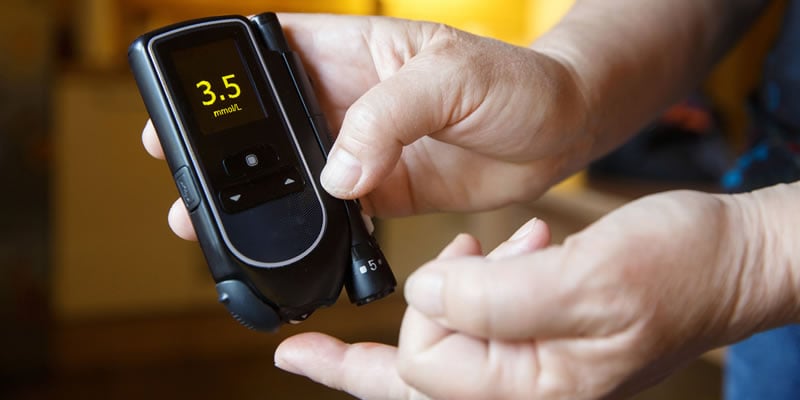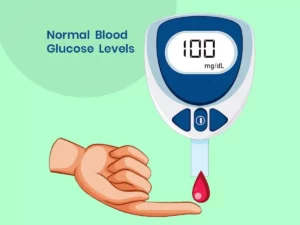Blood Sugar Converter
Not everyone is good at maths, hence the dilemma of converting values. Diabetes is the ninth leading cause of death worldwide, and in India, it is the 7th cause of early death, which has increased the popularity of certain terms and values and one of them being “mmol/l to mg/l”. As overwhelming as it may sound, converting these units is not rocket science. This article will help those who have always struggled with converting these units. Not only will it help you in identifying your glucose levels, but also it will let you know about your body a little bit.
Contents
Blood Glucose Levels
Blood glucose levels rise postprandial, when you eat a carbohydrate-rich diet, your glucose levels rise dramatically as your body digests carbohydrates into simpler products i.e. glucose. Eating a diet rich in refined carbs has been shown to promote insulin resistance.
Sometimes people tend to indulge in wrong eating practices, therefore is a need to identify your glucose levels so that you know how your body is responding to carbs.
You should check your blood glucose levels if you’re experiencing polyuria, polyphagia, and polydipsia. Values can be corrected with proper care and treatment, and are not permanent. People have treated themselves by following a diet rich in complex carbohydrates, enough fiber and protein, and exercise-like aerobic activities. At the end of the day, it’s you who can change your own glucose values and quality of life.
Given hereunder is a glucose levels chart:
| BLOOD SUGAR CHART | |
|---|---|
| Fasting | |
| Normal Glucose Levels | <110 mg/dl (6.1 mmol/L) |
| Diabetic Person | >126 mg/dl (7mmol/L) |
| 2 Hours After Glucose Load (postprandial) | |
| Normal Glucose Levels | <140 mg/dl (7.8 mmol/L) |
| Diabetic Person | >200mg/dl (11.1 mmol/L) |
| HbA1c (Glycated hemoglobin) | |
| Normal Glucose Levels | <5.7% |
| Diabetic Person | > 6.4% |
What Is mmol/l
mmol/l stands for millimoles per liter. This is a unit of measurement that is used to measure the concentration of a substance in a liquid. Glucose is a sugar molecule, and mmol/l is the unit of measurement used to measure the concentration of glucose in the blood. The normal range for blood glucose levels is 4-6 mmol/l.
What Is mg/dl
Mg/dl stands for milligrams per deciliter and is a unit of measurement used to express the concentration of substances in a liquid. In the case of glucose, mg/dl is used to measure the amount of sugar in the blood.
How To Convert
There are two types of methods that you can use to convert values:
mmol/l To mg/dl
One mmol/l (millimole per liter) equals 18 mg/dl. So if your glucose level is 5 mmol/l, that would be 90 mg/dl – pretty high!
The average normal blood sugar level is said to be between 4-6 mmol/l or 70-108 mg/dl. But keep in mind that different labs use different standards for what “normal” means.
If you’re curious about your own blood sugar levels, the best way to find out is to ask your doctor or healthcare provider to order a fasting blood sugar test.
mg/dl to mmol/l
To convert mg/dl to mmol/l, divide the mg/dl by 18. For example, if your glucose level is 180 mg/dl, 180 divided by 18 equals 10. Therefore, 180 mg/dl is equal to 10mmol/l.
Why Convert From One Unit to Another?
Converting glucose levels from one unit to another is important when trying to maintain tight glycemic control. Whether you are measuring your own blood sugar levels or those of a loved one, it is crucial that you understand how to convert between the different units of measurement. This way, you can always be sure that you are interpreting the numbers correctly and taking the appropriate steps to manage your diabetes.
There are a few reasons you might want to convert from one unit to another. Maybe your doctor uses mmol/l and you want to know what your level is in mg/dl. Or, you may be reading a research article that uses mmol/l but your glucose meter uses mg/dl. Here are a few quick and easy tips for converting between the two units.
Converter
The mmol/l to mg/dl converter is a handy tool that can be used to quickly and easily convert between the two units of measurement. Glucose values can vary depending on the time of day, so it’s important to be able to convert between the two units in order to get an accurate reading. This converter will allow you to do just that, and it’s easy to use. Simply enter the value you wish to convert, and the calculator will do the rest.
Conclusion
Converting mmol/l to mg/dl is a quick and simple process that can be done using a calculator or by using a conversion chart. This guide has provided you with all of the information you need to make this conversion, so there is no excuse not to get it right. Make sure you always double-check your conversion before making any decisions based on the results.
To convert mmol/l to mg/dl, multiply the value in mmol/l by 18. To convert mg/dl to mmol/, divide the value in mg/ dL by 18.
For more information contact Mantra Care for additional information on diabetes care. With the support of our Diabetes Control Program. You can also get in touch with their nutrition experts through our online nutrition counseling, who can guide you through the process and help you achieve your fitness goals.




